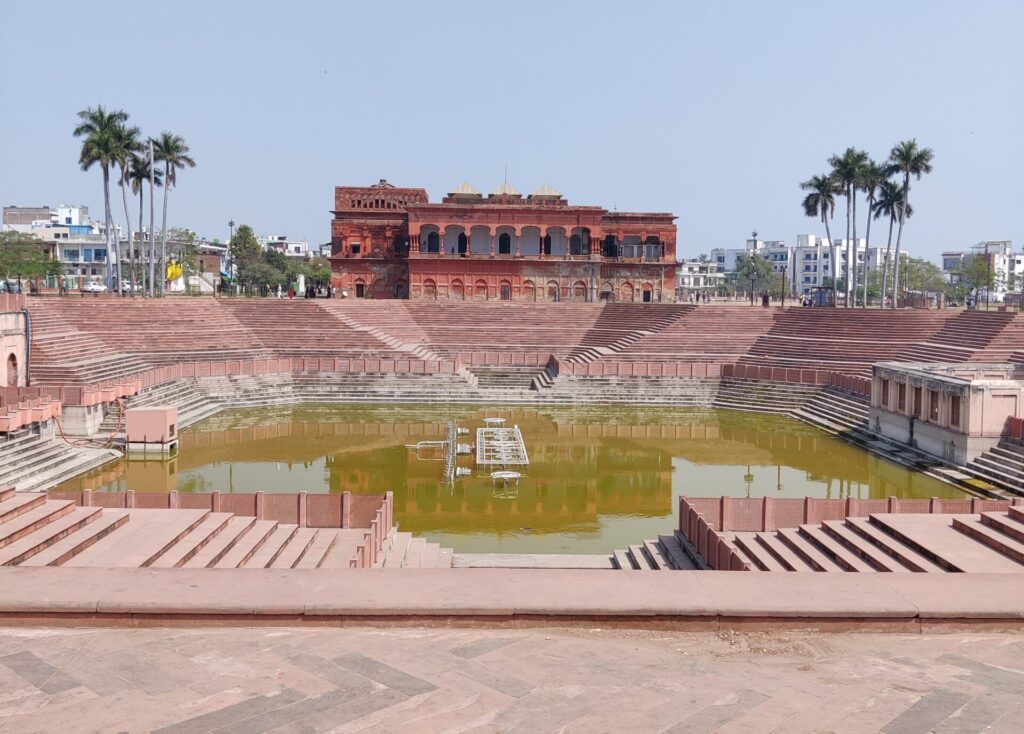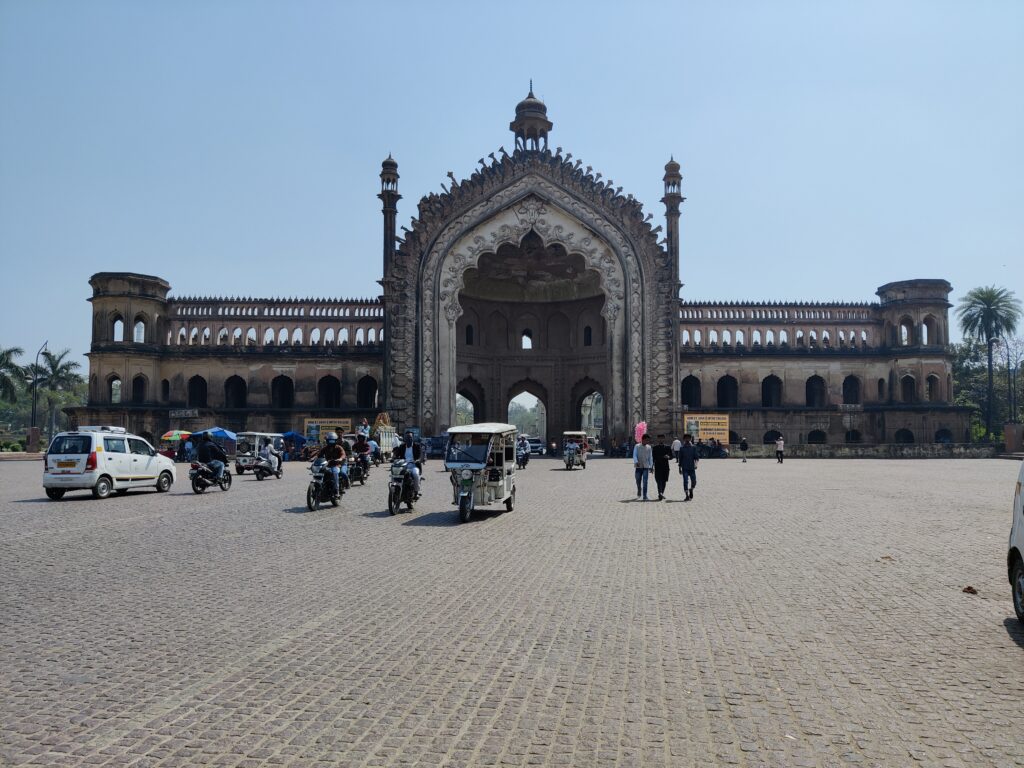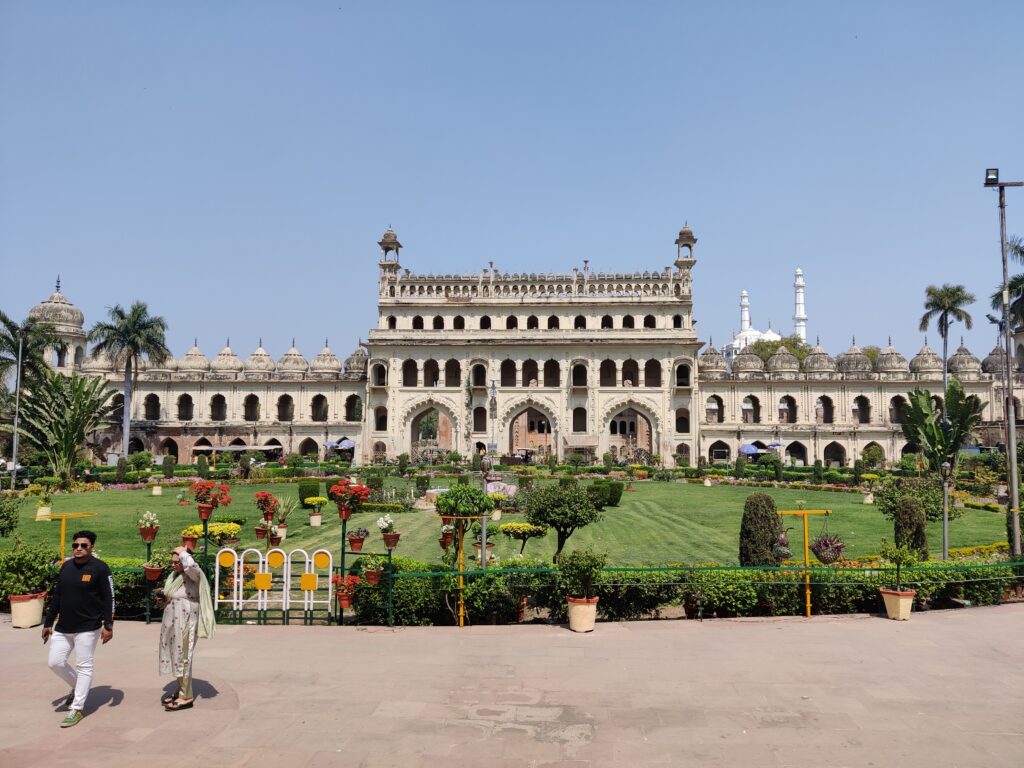Even those who don’t like chicken like Chikan. – The shop owner declared while showing beautifully carved handcrafted chikan work clothes. He had earlier demonstrated how the cloth is first block-printed and the karigars work along the lines of the print. After the embroidery is done, the fabric is washed and sometimes even dyed as per requirement. He was utilizing that information to upsell and successfully. You can get it dyed as well. Once you dye it black you cannot dye it again.- He told me before I finally selected a fabric.

They say that Lucknow is the city of Tehzeeb. More often than not, you will experience it as well. “Ji Bhaiya”, you will be hearing often whenever you interact with anyone, be it a rickshawala, thelawala, or shopkeeper. We stayed near Naka Chauraha. It was very near to Charbagh railway station. The Radical hotel where we stayed was a decent one. The staff was good, the food was good, and the ambiance was also good.
The Signs of Old Glory
A lot of nearby buildings have the distinct style of the old days. Beautifully carved panels, facade reflecting the drawing book of a middle schooler – full of flowers, leaves, and animal motifs.
As we moved towards the heritage area, we saw even older buildings although in dilapidated condition. Some particular areas seem to be living both in old and new times.
Rumi Darwaja

This gate has become the logo of Lucknow. You can even find it in the Lucknow metro logo. According to the rickshawala-cum-guide we employed for a very nominal fee, it was commissioned by Nawab Asaf-ud-daula during the famine. During the day poor people built the building which was demolished by the rich during the night. Thus ensuring work for the workers the next day. It took more than eleven years to complete the Rumi Darwaja. It stands one story from one side with a canopy on top. On looking from the other side, it is three storeys.
Another interesting fact pointed out by the same guide was that the elements used in the gate resemble ingredients used in cooking. Like the entire gate resembles a Pan – a betel leaf. The stick-like structure on the outer upper layer are cloves that were earlier used to be lit as torches. If we invert the gate, it resembles a Naulakha haar – a precious necklace.
If we extrapolate on the same line we can easily find the meaning of the name of the city Lucknow – Lakh Nau – still meaning the same Naulakha. Although this is based on my wild imagination only, I would not be surprised if it was true.
Picture Gallery
There are several old structures in the Hussainabad heritage area. Behind the stepwell, in a red building which was earlier called Baradari, the picture gallery is housed. This one-room gallery houses majestic pictures of the erstwhile Nawabs. Pictures demonstrate the expertise of the artists. Most seem to look towards you in whatever direction you look from.
In a particular painting, sun rays are painted in a very realistic way. While showing the painting of Nawab Wajid Ali Shah the guide told a famous story about him. While Awadh was being annexed by the British, most royals were running away. But to the surprise of the British Wajid Ali Shah didn’t escape. When asked he told that no servant was there to put his shoes on his feet.
Bada Imambara

It is a grand congregational hall. Beautiful, elaborate, and majestic. Other buildings in the Hussainabad heritage complex are Chota Imambara, clock tower- it is a new addition in Hussainabad and is the tallest clock tower in India, Satkhada – which could be constructed till four storeys only, stepwell, etc.
